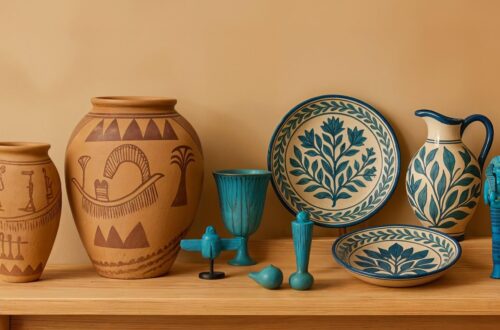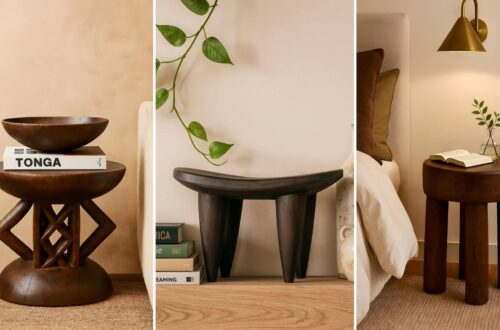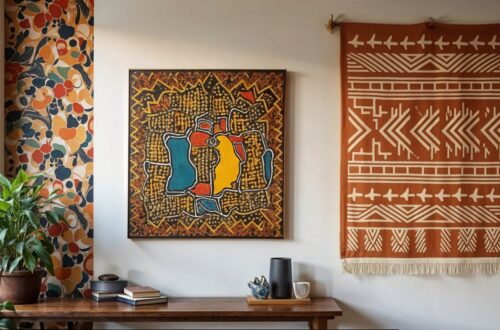African bronze bangles have been around for over ten centuries. They rattled in markets, sealed dowries, and showed off wealth long before “statement jewelry” became a phrase. Fast forward to today, and they’re making a comeback as bold decor accents. Let’s journey through how it all happened.
Jump to:
The History of African Bronze Bangles
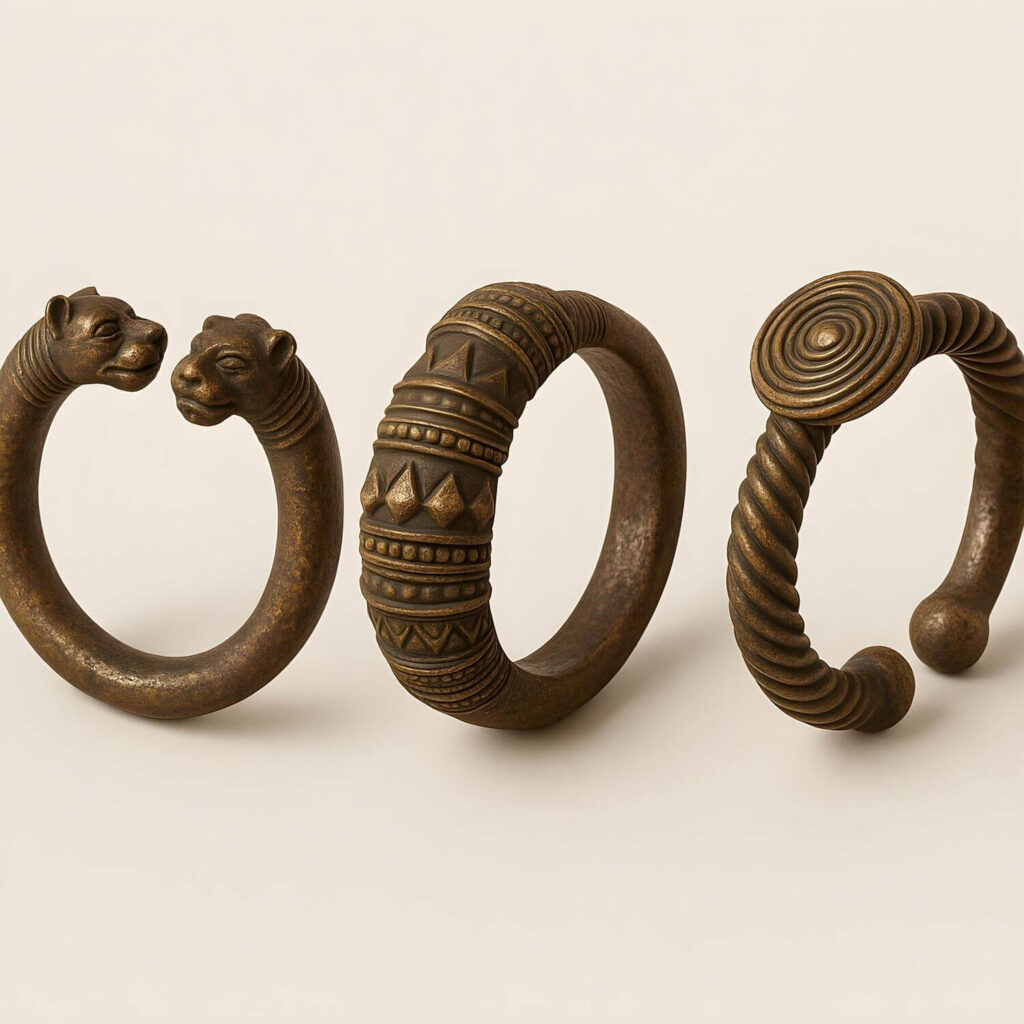
Where Bronze Bangles Began
Long before global trade routes boomed, African smiths were already melting copper and tin into bronze. By the 11th century, in places like Nigeria and Ghana, bronze bangles were firmly woven into daily life. They were status markers, protective charms, and portable wealth all in one.
From Jewelry to Currency
In parts of West and Central Africa, bronze bangles quickly evolved into something bigger than ornament. They became currency. A single cuff could buy cattle. A stack could secure land. They were exchanged for goods like salt, cloth, and food—essential lifelines in a trading society.
Families also piled them into dowries, transforming metal into promises of stability and partnership. Traders weighed them with precision, households guarded them as treasure, and rulers stockpiled them like royal reserves. Bangles were a working economy.
Craftsmanship & Styles
The Craft Behind the Shine
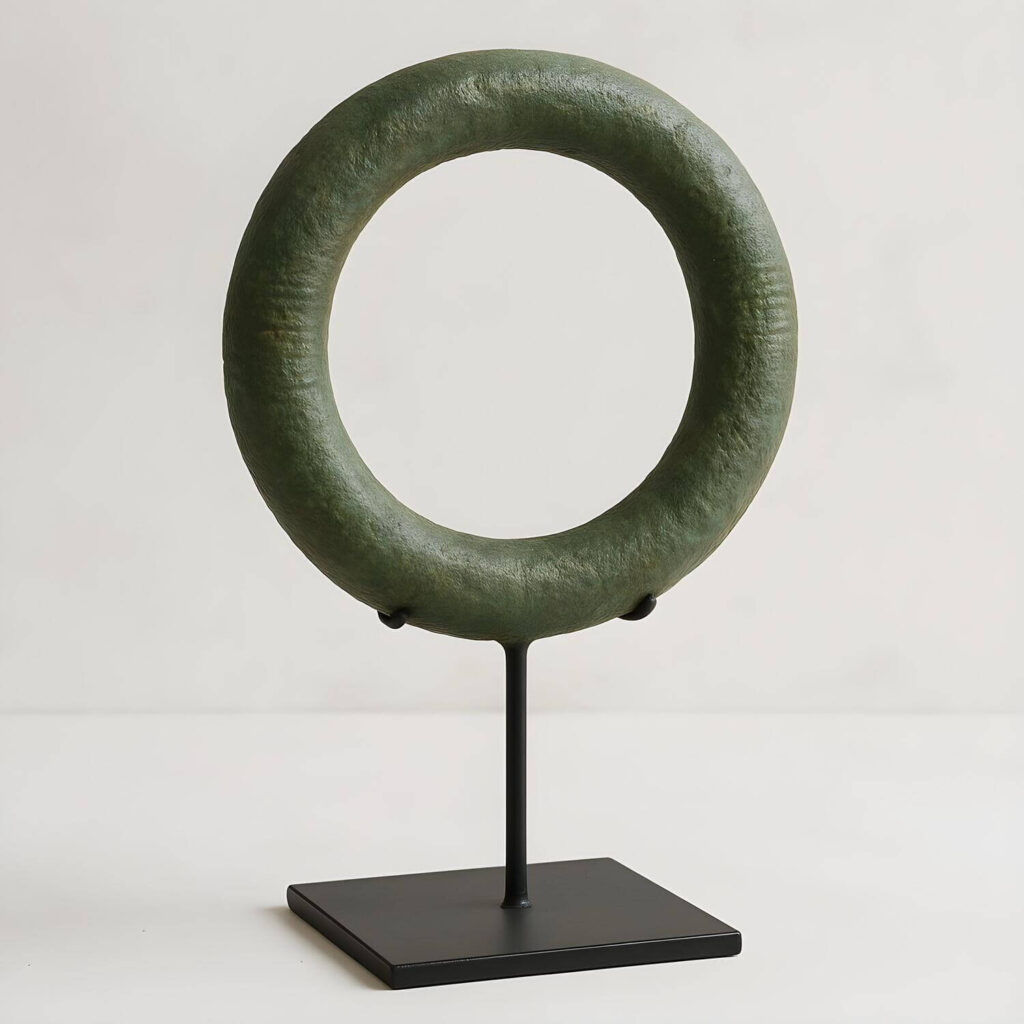
Making bronze bangles wasn’t quick work—it was an art form. Artisans relied on the lost-wax casting technique: sculpting a mold in wax, coating it in clay, and letting the fire burn the wax away. Liquid bronze rushed into the cavity, hardened, and revealed a raw bangle.
After cooling, it was polished until gleaming and sometimes engraved with fine patterns. The process was slow, sweaty, and precise, demanding patience at every step. But the payoff? A metal piece strong enough to endure centuries yet delicate enough to flaunt striking detail.
That duality—endurance and refinement—is what makes these bangles feel timeless.
You May Also Like: African Bronze Art | From Ancient Kingdoms to Modern Homes
Different Shapes, Same Metal Magic
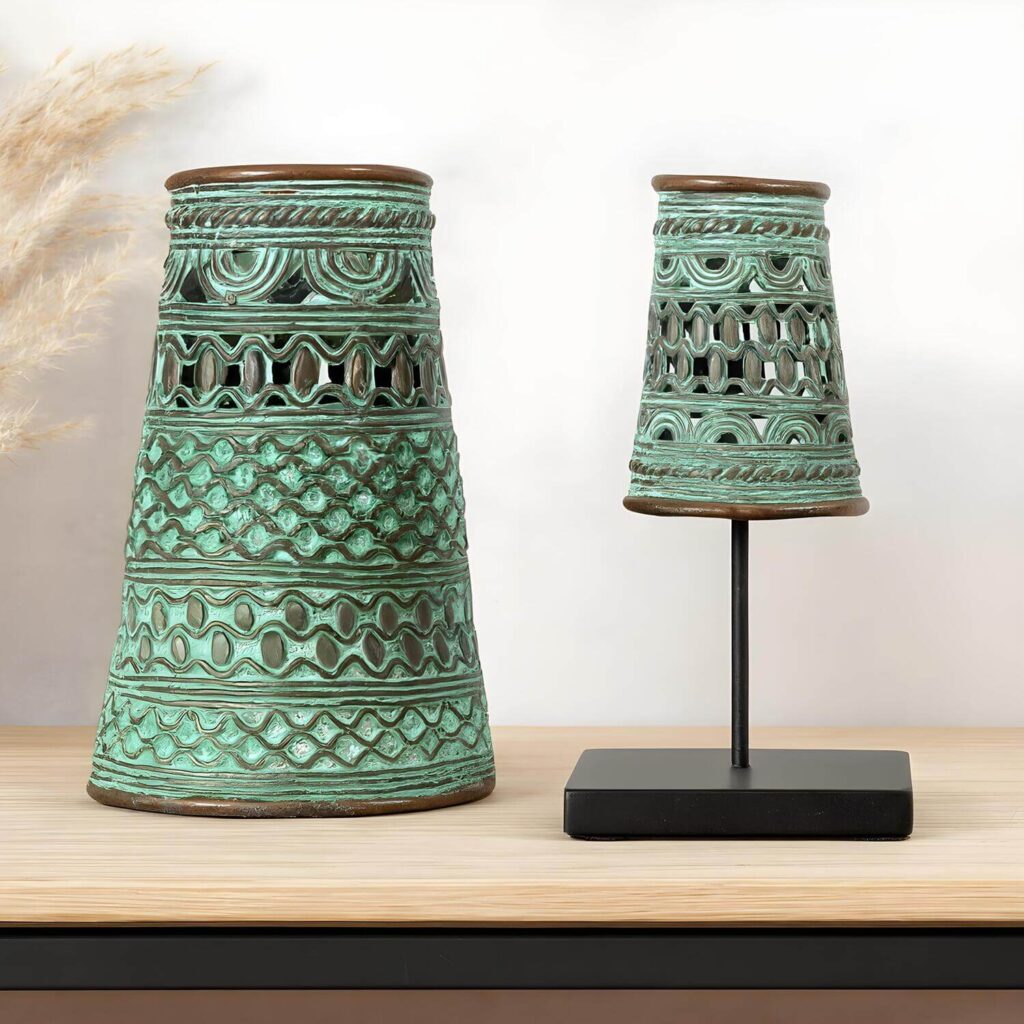
As techniques evolved, bronze bangles became bolder and more varied. Some were thick, commanding cuffs meant to be worn in ceremonies. Others were slim spirals, stacked high so arms jingled like music.
West African spirals became iconic, coiling around wrists like miniature sculptures. Central Africa leaned toward wide cuffs, heavy and eye-catching. Each region left a fingerprint on the metal, turning designs into signatures. This enables collectors to trace those subtle details back to their origins to this day.
Bronze Bangles as Decor Today
Gorgeous Accents in Modern Interiors
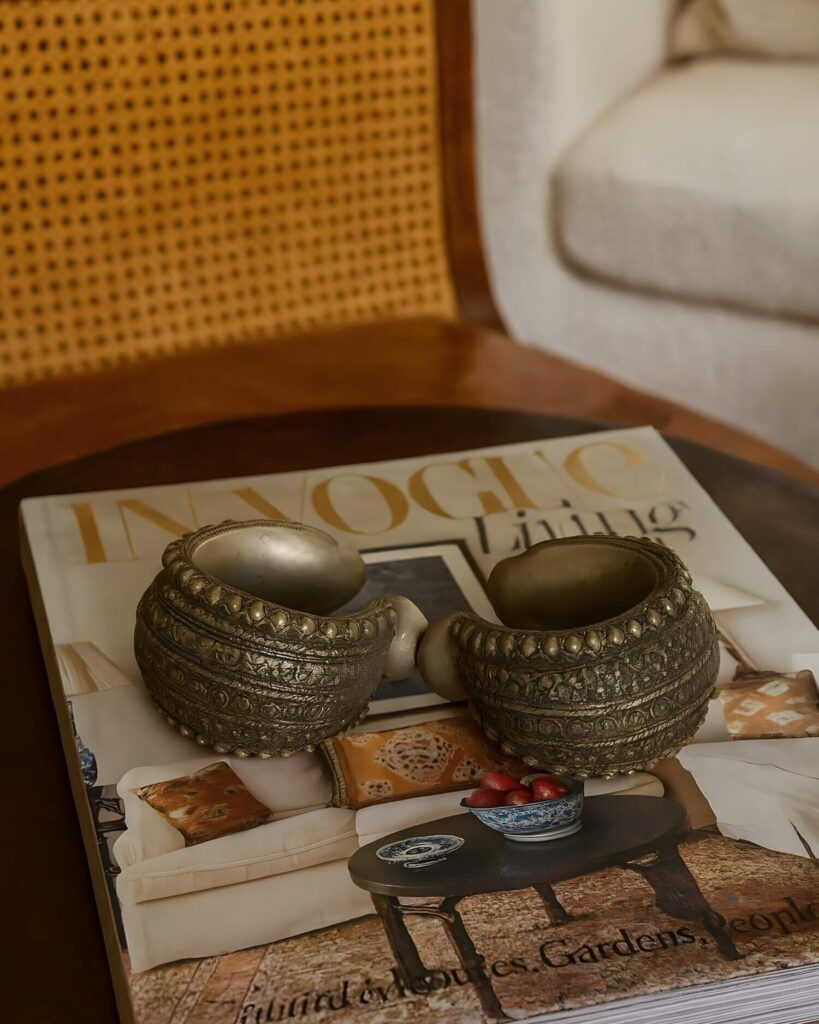
Bronze bangles aren’t currency anymore, but they’ve stepped into an equally exciting role: decor with attitude. Their aged patina and sculptural shapes make them irresistible to interior lovers. They shine in homes with global influence, Afro-boho warmth, or eclectic edge.
Imagine a trio arranged on a sideboard, their metal catching the light. Or a neat row on a coffee table, styled like a small installation. Mounted on the wall, they read as abstract art, instantly pulling in that worldly, collected feel designers chase. They carry tales of African history yet blend seamlessly into today’s modern rooms.
A Few Ways to Style Your Bronze Bangles
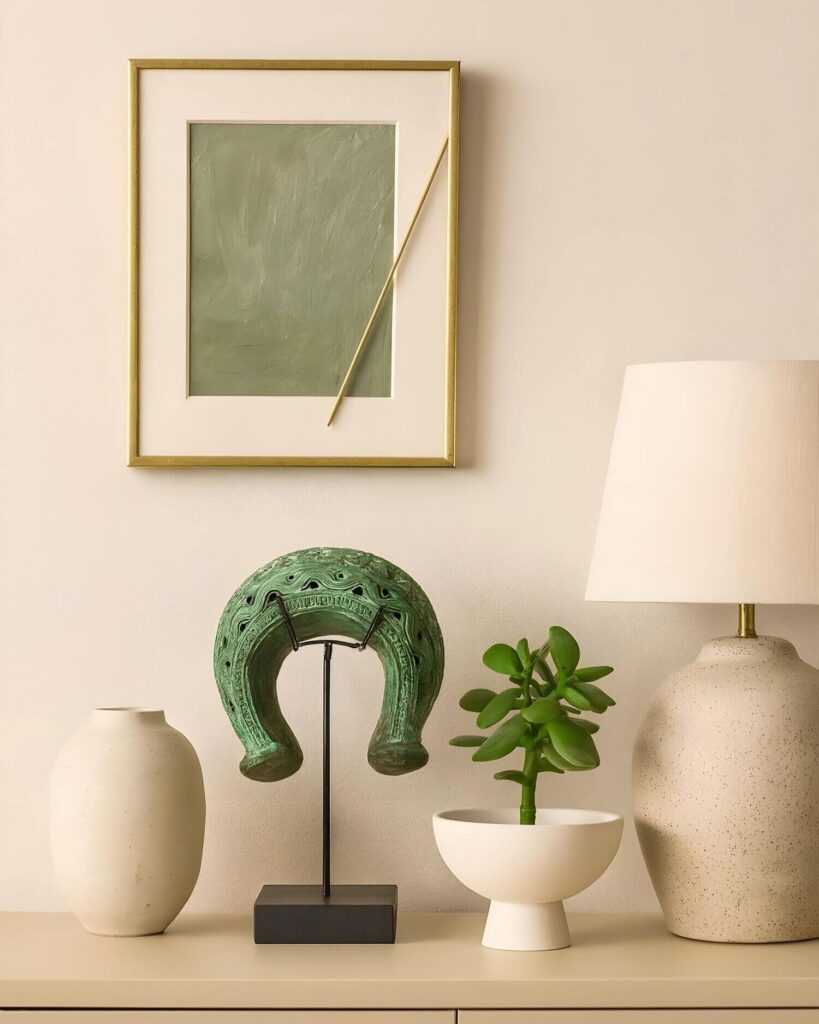
I keep African bronze bangles around my most elegant rooms. They have that chic regal vibe that feels almost too good to be legal. Here are three of my favorite ways to show them off:
- Propped on a black metal stand, elegantly placed on a console table or sideboard.
- Laid flat on a sleek platter or an oversized book on the coffee table.
- Mounted in a frame, in sets of four, for an absolute showstopper in the entryway.
To be honest, there’s no wrong way to style them. Bronze bangles thrive in any elegant context. They prove that history doesn’t belong only in museums. It also shines on your wall, your table, or your shelf, looking chic as ever.
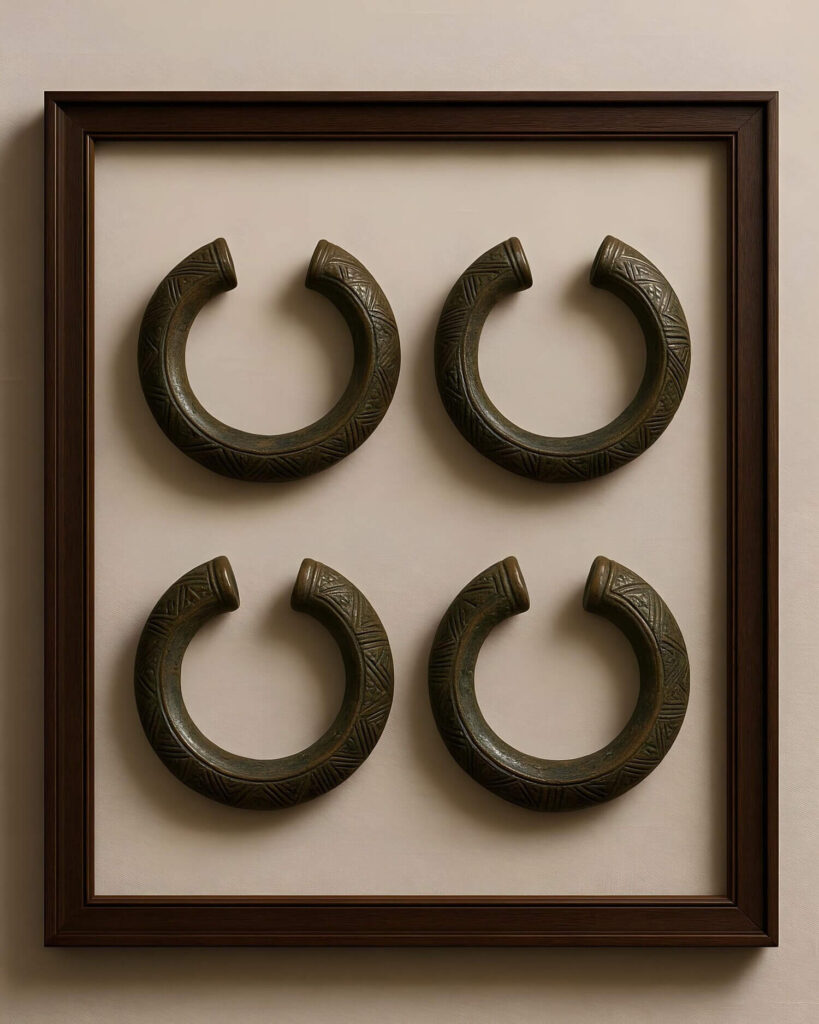
Final Thoughts On African Bronze Bangles
Bronze bangles have been currency, jewelry, and cultural markers. Now they’ve stepped into a new role—as decor objects with serious attitude. They carry centuries of African craftsmanship yet still feel fresh today. On your table or on your wall, they are one of the great innovations we got to see on the continent across centuries.




